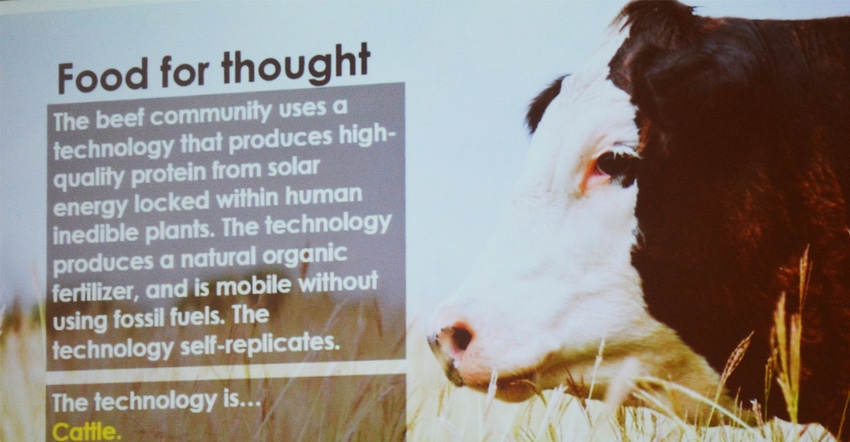
Beef is the ultimate plant-based protein, says Dr. Sara Place, Elanco Animal Health technical consultant in sustainability.
“There is a perception out there that the cattle industry is somehow responsible for all kinds of environmental damage and that eating beef is not sustainable,” she said, “But that perception totally ignores reality. The reality is that cattle excel at taking low-quality forage grasses and turning them into high-quality protein for the human diet.”

Place spoke during the “consumer trends” program at the 2019 Kansas Livestock Association Convention, held in Wichita in December.
“I’ve talked to people who think that ‘grain-fed’ beef means the cattle are eating nothing but grain from the time they are weaned until they are harvested,” Place said. “They are shocked to learn that cattle are never fed grain exclusively and that grain makes up only about 11% of their total diet. 82% of cattle feed is forage grasses and about 7% is fiber like DDGs.”
She said that the perception that cattle are major contributors to climate change because they release methane from burps and in manure. However, long before white settlers arrived in America, there were millions of large ruminant animals grazing on the forage lands of the country. The bison herd was much larger than the size of the modern beef industry, she said, not to mention the millions of deer, elk, antelope and other ruminant species that are also part of the picture.
Place said the human protein value of beef is also twice that of grains or human food crops and that beef cattle can be raised on forage ground that is not suitable for other crops. The supply of arable land suitable for growing human food crops is not great enough to replace the protein supplied by beef, she said.
“I think you have to realize that people who are eating this plant-based alternative to beef also eat other meats, such as chicken, turkey or pork,” she said. “Most people are omnivores who eat a variety of meat and plant foods. I don’t see there being a huge demand for those alternatives. Sure, they will take some market share, but how much is the question. There’s also the fact that as people in other countries see an improvement in income, the first thing they spend it on is higher quality foods. Beef is one of those.”
Place added that there is also a misconception of how much greenhouse gas is produced by agriculture as a while and beef production in particular.
“You are talking about 4% of greenhouse gasses coming from animal agriculture and only half of that is beef,” she said.
About the Author(s)
You May Also Like






